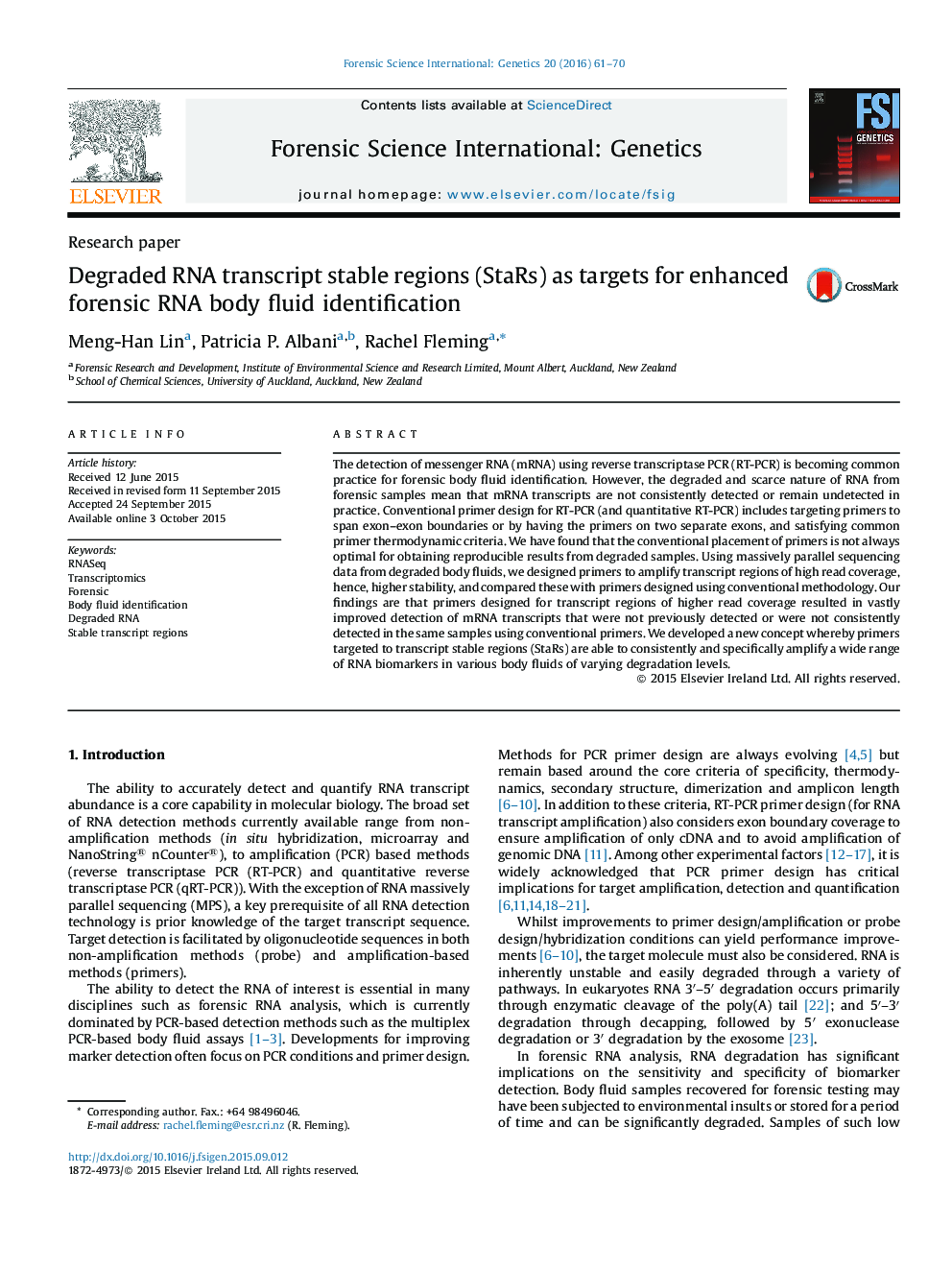| Article ID | Journal | Published Year | Pages | File Type |
|---|---|---|---|---|
| 98738 | Forensic Science International: Genetics | 2016 | 10 Pages |
•RNA stable regions (StaRs) identified from RNAseq (MPS) of degraded body fluids.•StaRs are less degraded and hence ideal targets for forensic biomarker detection.•StaR primers significantly outperform conventional primers in degraded samples.•StaR primers consistently detect a wide range of forensic body fluid RNA markers.•StaR primers perform in different body fluids at varying degradation levels.
The detection of messenger RNA (mRNA) using reverse transcriptase PCR (RT-PCR) is becoming common practice for forensic body fluid identification. However, the degraded and scarce nature of RNA from forensic samples mean that mRNA transcripts are not consistently detected or remain undetected in practice. Conventional primer design for RT-PCR (and quantitative RT-PCR) includes targeting primers to span exon–exon boundaries or by having the primers on two separate exons, and satisfying common primer thermodynamic criteria. We have found that the conventional placement of primers is not always optimal for obtaining reproducible results from degraded samples. Using massively parallel sequencing data from degraded body fluids, we designed primers to amplify transcript regions of high read coverage, hence, higher stability, and compared these with primers designed using conventional methodology. Our findings are that primers designed for transcript regions of higher read coverage resulted in vastly improved detection of mRNA transcripts that were not previously detected or were not consistently detected in the same samples using conventional primers. We developed a new concept whereby primers targeted to transcript stable regions (StaRs) are able to consistently and specifically amplify a wide range of RNA biomarkers in various body fluids of varying degradation levels.
